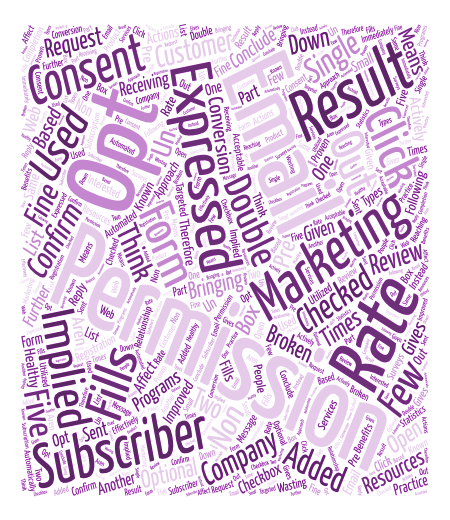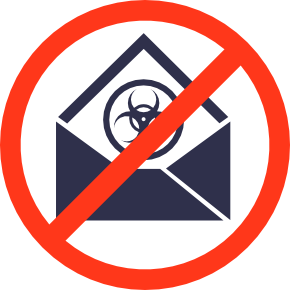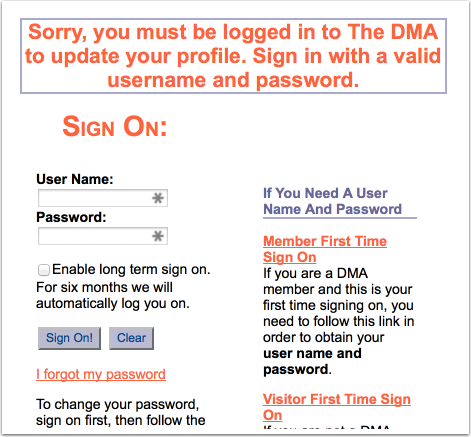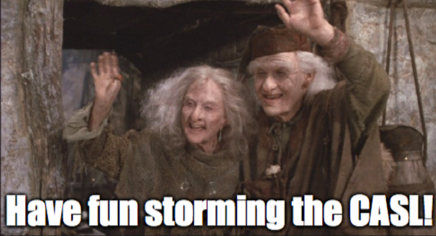CASL
CRTC fines individual for company violations under CASL
The Commission finds that nCrowd, Inc. committed one violation of paragraph 6(1)(a) and one violation of paragraph 6(2)(c) of Canada’s Anti-Spam Legislation (the Act) in relation to commercial electronic messages sent to recipients in Canada. The Commission also finds that Brian Conley is liable, under section 31 of the Act, for those violations. Accordingly, the Commission imposes an administrative monetary penalty of $100,000 on Brian Conley. CRTC
The commission’s report is well worth a read as it discusses many of the things I’ve noticed from spamming operations over the years. It’s pretty standard business practice for spammers to have a complex set of sorta but not really different businesses. They all interact and share data, but not legal liability. They’re mostly treated as one business by the principles and there’s no real dedication to any one brand name.
Read MoreImplied permission
Codified into law in CASL, implied permission describes the situation where a company can legally mail someone. The law includes caveats and restrictions about when this is a legitimate assumption on the part of the company. It is, in fact, a kludge. There isn’t such a thing as implied permission. Someone either gives you permission to send them email or they don’t.
We use the term implied permission to describe a situation where the recipient didn’t actually ask for the mail, but isn’t that bothered about receiving it. The mail is there. If it has a particularly good deal the recipient might buy something. The flip side of not being bothered about receiving mail, is not being bothered about not receiving mail. If it’s not there, eh, no biggie.
Implied permission isn’t real permission, no matter what the law says.
Now, many deliverability folks, including myself, understand that there are recipients who don’t mind getting mail from vendors. We know this is a valid and effective way of marketing. Implied permission is a thing and doesn’t always hurt delivery.
However, that does not mean that implied permission is identical to explicit permission. It’s one of the things I think CASL gets very right. Implied permission has a shelf life and expires. Explicit permission doesn’t have a shelf life.
Implied permission is real, but not a guarantee that the recipient really wants a particular email from a sender, even if they want other emails from that sender.
CASL Private Right of Action Delayed
Today the Canadian Government announced they were suspending the provision that allows individuals to sue marketers for violations of CASL.
Under these provisions, individual Canadian consumers had a private right of action. Any Canadian could sue any company that sent mail violating the law. This part of the law upset many senders and marketers. I’m sure many are relieved at this delay in enforcement.
This delay has no effect on the other major CASL provision with a July 1, 2017 deadline.
On July 1 a 3 year waiver on implied consent collected prior to CASL will end. What does that mean? Implied consent is just what it sounds like. Under certain conditions, senders can assume they have legal consent to mail the recipient. These conditions are spelled out in Section 10(9) of the law. Implied consent expires after 2 years. However, companies were granted a 3 year waiver on this provision for email addresses collected prior to July 1, 2014.
The waiver allowed senders to continue mailing addresses with implied consent even after the 2 year expiration. This was to allow companies time to convert implied consent into express consent as to not lose recipients. There are about 3 weeks left for senders to get explicit permission to continue mailing addresses collected prior to July 1, 2014.
Additionally, as of July 1, 2017 CASL requires a parliamentary committee to review the law and its operation over the last 3 years.![]()
Many senders are thrilled with the indefinite suspension of the PRA. It was, I think, one of the parts of the law that worried people the most. Allowing any citizen to sue someone who sent them mail they thought violated CASL? That concept struck fear into the hearts of many a legitimate marketer. I was never quite so sure it was going to be as bad as some thought.
A few years ago I had the opportunity to sit in a conference session with an individual from the Canadian government. They explained that there were significant barriers to individuals suing senders. Plaintiffs must file in provincial courts, not local ones. Second, defendants couldn’t be under investigation by the CRTC and a PRA at the same time. The presenter implied that CRTC had priority over any joint defendant. Finally, the plaintiff must prove actual damages. This is difficult for defendants that use a freemail provider like Gmail. There aren’t really damages in that case.
The overall gist of the session was that PRA in Canada was not that simple. Individuals wanting to sue had some bigger hoops to jump through than just filing something in small claims court. Nevertheless, I’m sure that many senders are relieved to hear the PRA is indefinitely suspended.
March 2017: The Month in Email
It’s that time again… here’s a look at our last month of blog posts. We find it useful to recap each month, both to track trends and issues in email delivery and to provide a handy summary for those who aren’t following along breathlessly every single day. Let us know if you find it useful too!
As always, I wrote about email filters. It’s so important to recognize that filters aren’t arbitrary — they’re detailed instructions that help meet specific user needs, and the more you are cognizant of that, the better you’ll be able to work with them. Additionally, filters aren’t perfect and likely never will be. False positives and false negatives are frustrating, but as long as spam is still a viable business for spammers, they’ll continue to figure out how to work around filters. As such, we can’t expect filters to be 100% accurate in determining what constitutes wanted and unwanted mail.
Part of this, of course, is due to the problem of fraudulent signups. Companies aren’t particularly vigilant about address acquisition and hygiene, and as a result, they’ll claim you “signed up” for their email when you did not. Some people believe that a confirmed opt-in (COI) will solve this problem, but our experience is companies are reluctant to leave revenue on the table, and that they will continue to mail to addresses that have not confirmed.
Address sharing and co-reg is also part of the problem. As we saw in the extensive RCM data breach, many major brands continue to work with third-party senders to send mail in ways that are quite clearly spam. And in more criminal activity, I looked at the rise of botnets and how some of those criminals were brought to justice. In other justice news, there’s been an indictment in the Yahoo breach and another CASL enforcement action.
I wrote a post about bounce handling and “relaying denied” error messages, which are quite rare. It’s useful to have an understanding of these and other error messages, since bounces are sometimes indicative of a larger technical issue, such as when AOL accidentally bounced all messages for a short period last week. Speaking of AOL, we noted that there’s no official timeline for the move from Verizon addresses to AOL addresses following the 2015 acquisition, but it may be worth considering asking your customers to update their addresses.
Spam and filters aren’t the only factors of course. It can be challenging to figure out the multiple factors that make up the black box of delivery. And of course, the most important part of delivery continues to be engagement, engagement, engagement.
I wrote a few posts this month on why I do what I do, and why it’s so important to me. First, I wrote about A Day Without A Woman, and my choice not to participate in offering advice and guidance for that day. The truth is that I enjoy sharing what I know and helping people solve problems. I was honored to be named one of 11 Innovators in Email, and I know that my volunteer work in the industry and my unpaid blogging work is a big part of that. It may sound corny, but I really do believe we are on the front lines of the fight of good vs. evil online, and despite the distractions of politics and world events, we must all continue to do our part.
More CASL enforcement
Last week the CRTC published a CASL enforcement action wherein they fined an individual $15,000 for 10 violations of the act.
Read MoreFrom the archives: Taking Permission
From February 2010, Taking Permission.
Permission is always a hot topic in email marketing. Permission is key! the experts tell us. Get permission to send email! the ISPs tell us.
Marketers have responded by setting up processes to “get” permission from recipients before adding them to mailing lists. They point to their privacy polices and signup forms and say “Look! the recipient gave us permission.”
In many cases, though, the permission isn’t given to the sender, permission is taken from the recipient.
Yes, permission is being TAKEN by the sender. At the point of address collection many senders set the default to be the recipient gets mail. These processes take any notion of giving permission out of the equation. The recipient doesn’t have to give permission, permission is assumed.
This isn’t real permission. No process that requires the user to take action to stop themselves from being opted in is real permission. A default state of yes takes the actual opt-in step away from the recipient.
Permission just isn’t about saying “well, we told the user if they gave us an email address we’d send them mail and they gave us an email address anyway.” Permission is about giving the recipients a choice in what they want to receive. All too often senders take permission from recipients instead of asking for permission to be given.
Since that post was originally written, some things have changed.
CASL has come into effect. CASL prevents marketers from taking permission as egregiously as what prompted this post. Under CASL, pre-checked opt-in boxes do not count as explicit permission. The law does have a category of implicit permission, which consists of an active consumer / vendor relationship. This implicit permission is limited in scope and senders have to stop mailing 2 years after the last activity.
The other change is in Gmail filters. Whatever they’re doing these days seems to really pick out mail that doesn’t have great permission. Business models that would work a few years ago are now struggling to get to the inbox at Gmail. Many of these are non-relationship emails – one off confirmations, tickets, receipts. There isn’t much of a relationship between the sender and the recipient, so the filters are biased against the mail.
Permission is still key, but these days I’m not sure even informed permission is enough.
October 2016: The Month in Email
We’ve returned from London, where I spoke at the Email Innovations Summit and enjoyed a bit of vacation. My wrap-up post also mentions an article I wrote for the Only Influencers site, which looks at questions I get asked frequently: “Why does spam make it to the inbox and our legitimate marketing email doesn’t? Should we just copy their tactics?”
In industry news, Yahoo caught our attention for two surprising moves: disabling forwarding and — much more disturbing — creating software for intelligence agencies to search customer email.
Some legal updates this month: The Second Court of Appeals upheld an earlier ruling that companies are in fact liable for the activities of their affiliates, including spam and fraudulent claims. This is important, as we often see spammers and cybercriminals use affiliates to distance themselves from these activities. We also saw another fine assessed for a violation of CASL, and noted with appreciation the transparency and thoughtful process that the Canadian Radio-television and Telecommunications Commission (CRTC) demonstrates in explaining their actions.
Another excellent report is the one created by the Exploratorium to explain their recent experience with being phished. It’s a good piece to share with your organization, in that it reminds us that these cybercriminals are exploiting not just our technology but our trust-based connections to our friends and colleagues. It’s important to raise awareness about social engineering as a part of information security. And speaking of email security, we were delighted to note that André Leduc received the 2016 J.D. Falk award this month at M3AAWG for his excellent work on this topic. It’s a fitting legacy to our friend, J.D., who died five years ago this month. We miss him.
Finally, we’d be remiss in observing Halloween without a post about zombies. Feel free to read it aloud in your spookiest voice.
Another CASL fine assessed
This week the Canadian Radio-television and Telecommunications Commission (CRTC) announced a $50,000 fine against Blackstone Learning Corp. for violations of CASL.![]()
In early 2015, the CRTC identified over 380,000 emails sent without the consent of recipients and fined Blackstone $640,000. Blackstone appealed the ruling and the Commission lowered the fine to $50,000.
I strongly recommend folks who are interested in how the CRTC is enforcing CASL read the full release. In it, the CRTC walks us through the process of investigation. In this case, Blackstone argued that they had implied consent based on the public nature of the recipients email addresses and the fact they’re published on different websites. The commission disagreed.
The 10 worst …
Spamhaus gave a bunch of us a preview of their new “Top 10 worst” (or should that be bottom 10?) lists at M3AAWG. These lists have now been released to the public.![]()
The categories they’re measuring are:
Things to read: March 9, 2016
It’s sometimes hard for me to keep up with what other people are saying and discussing about email marketing. I’ve been trying to be more active on LinkedIn, but there are just so many good marketing and delivery blogs out there I can’t keep up with all of them.
Here are a couple interesting things I’ve read in the last week.
Five Steps to Stay Out of the Spam Folder. Conceptually easy, sometimes hard to pull off in practice, these recommendations mirror many things I say here and tell my clients about delivery. The audience is in charge and your recipients are the best ally you can have when it comes to getting into the inbox.
Which states are the biggest sources of spam?. California and New York top the list, but the next two states are a little surprising. Over on Spamresource, Al points out the two next states have some unique laws that may affect the data. I just remember back in the day there were a lot of spammers in Michigan, I’m surprised there’s still a significant volume from there.
CASL didn’t destroy Canadian email. Despite concerns that CASL would destroy the Canadian email marketing industry, the industry is going strong and expanding. In fact, spending on email marketing in Canada was up more than 14% in 2015 and is on track to be up another 10% this year. Additionally, according to eMarketer lists are performing better because they’re cleaner.
A brief history of email. Part of the Guardian’s tribute to Ray Tomlinson, the person who sent the first email. Ray’s work literally changed lives. I know my life would be significantly different if there wasn’t email. Can you imagine trying to be a deliverability consultant without email? 🙂
Things you need to read: 2/5/16
 Ask the Expert: How Can Email Marketers Stay Out of Gmail Jail and in the Inbox? The expert in question is an old friend of mine, Andrew Barrett. I met Andrew online in the late 90s, and we worked together (briefly) at MAPS. He was out of email for a while, but I’m pleased he came back to share his talents with us. The information in the article is valuable for anyone who struggles with getting to the Gmail inbox.
Ask the Expert: How Can Email Marketers Stay Out of Gmail Jail and in the Inbox? The expert in question is an old friend of mine, Andrew Barrett. I met Andrew online in the late 90s, and we worked together (briefly) at MAPS. He was out of email for a while, but I’m pleased he came back to share his talents with us. The information in the article is valuable for anyone who struggles with getting to the Gmail inbox.
Unclutter Your Inbox, Archive & Keep Your Messages. Shiv Shankar talks about some new features at Yahoo Mail. With a simple click, you can archive email so it’s available to search, but not cluttering up your inbox. One of the things that jumped out at me from that article is that Yahoo is providing 1 TB of storage. That’s more than Google!
The EEC is doing a survey on the impact of CASL and want to hear from marketers. Go check out their blog post and take their survey.
Sparkpost has a guest blog from Alex Garcia-Tobar, co-founder of Valimail about common DKIM failures. I’ve met Alex a few times and I’ve always found him a pleasure to talk to. Alex is somewhat new in the email space, but he really gets some of the challenges in the authentication space. A lot of the issues he mentions in that blog post like lack of key rotation and shared keys are some of the technical debt I was talking about in my predictions for 2016 post.
What links have you read this week that are worth sharing?
What do you think about these hot button issues?
 It’s been one of those weeks where blogging is a challenge. Not because I don’t have much to say, but because I don’t have much constructive to say. Rants can be entertaining, even to write. But they’re not very helpful in terms of what do we need to change and how do we move forward.
It’s been one of those weeks where blogging is a challenge. Not because I don’t have much to say, but because I don’t have much constructive to say. Rants can be entertaining, even to write. But they’re not very helpful in terms of what do we need to change and how do we move forward.
A few different things I read or saw brought out the rants this week. Some of these are issues I don’t have answers to, and some of them are issues where I just disagree with folks, but have nothing more useful to say than, “You’re wrong.” I don’t even always have an answer to why they’re wrong, they’re just wrong.
I thought today I’d bring up the issues that made me so ranty and list the two different points of views about them and see what readers think about them. (Those of you who follow me on Facebook probably know which ones my positions are, but I’m going to try and be neutral about my specific positions.)
CASL botnet take down
 The CRTC served its first ever warrant as part of an international botnet takedown. The warrant was to take down a C&C (command and control) server for Win32/Dorkbot. International efforts to take down C&C servers take a lot of effort and work and coordination. I’ve only ever heard stories from folks involved but the scale and work that goes into these take downs is amazing.
The CRTC served its first ever warrant as part of an international botnet takedown. The warrant was to take down a C&C (command and control) server for Win32/Dorkbot. International efforts to take down C&C servers take a lot of effort and work and coordination. I’ve only ever heard stories from folks involved but the scale and work that goes into these take downs is amazing.
Bots are still a problem. Even if we manage to block 99% of the botnet mail out there people are still getting infected. Those infections spread and many of the newer bots steal passwords, banking credentials and other confidential information.
This kind of crime is hard to stop, though, because the internet makes it so easy to live in one country, have a business in a third, have a shell corp in a fourth, and have victims in none of those places. Law enforcement across the globe has had to work together and develop new protocols and new processes to make these kinds of takedowns work.
Are botnets really the spam problem?
Over the last few years I’ve been hearing some people claim that botnets are the real spam problem and that if you can find a sender then they’re not a problem. Much of this is said in the context of hating on Canada for passing a law that requires senders actually get permission before sending email.
Botnets are a problem online. They’re a problem in a lot of ways. They can be used for denial of service attacks. They can be used to mine bitcoins. They can be used to host viruses. They can be used to send spam. They are a problem and a lot of people spend a lot of time and money trying to take down botnets.
For the typical end user, though, botnets are a minor contributor to spam in the inbox. Major ISPs, throughout the world, have worked together to address botnets and minimize the spam traffic from them. Those actions have been effective and many users never see botnet spam in their inbox, either because it’s blocked during send or blocked during receipt.
Most of the spam end users have to deal with is coming from people who nominally follow CAN SPAM. They have a real address at the bottom of the email. They’re using real ISPs or ESPs. They have unsubscribe links. Probably some of the mail is going to opt-in recipients. This mail is tricky, and expensive, to block, so a lot more of it gets through.
Much of this mail is sent by companies using real ISP connections. Brian Krebs, who I’ve mentioned before, wrote an article about one hosting company who previously supported a number of legal spammers. This hosting company was making $150,000 a month by letting customers send CAN SPAM legal mail. But the mail was unwanted enough that AOL blocked all of the network IP space – not just the spammer space, but all the IP space.
It’s an easy decision to block botnet sources. The amount of real mail coming from botnet space is zero. It’s a much bigger and more difficult decision to block legitimate sources of emails because there’s so much garbage coming from nearby IPs. What AOL did is a last resort when it’s clear the ISP isn’t going to stop spam coming out from their space.
Botnets are a problem. But quasi legitimate spammers are a bigger problem for filter admins and end users. Quasi legitimate spammers tend to hide behind ISPs and innocent customers. Some send off shared pools at ESPs and hide their traffic in the midst of wanted mail. They’re a bigger problem because the mail is harder to filter. They are bigger problems because a small portion of their recipients actually do want their mail. They’re bigger problems because some ISPs take their money and look the other way.
Botnets are easy to block, which makes them a solved problem. Spam from fixed IPs is harder to deal with and a bigger problem for endusers and filters.
June 2015: the Month in Email
Happy July! We are back from another wonderful M3AAWG conference and enjoyed seeing many of you in Dublin. It’s always so great for us to connect with our friends, colleagues, and readers in person. I took a few notes on Michel van Eeten’s keynote on botnets, and congratulated our friend Rodney Joffe on winning the prestigious Mary Litynski Award.
In anti-spam news, June brought announcements of three ISP-initiated CAN-SPAM cases, as well as a significant fine leveled by the Canadian Radio-television and Telecommunications Commission (CRTC) against Porter Airlines. In other legal news, a UK case against Spamhaus has been settled, which continues the precedent we’ve observed that documenting a company’s practice of sending unsolicited email does not constitute libel.
In industry news, AOL started using Sender Score Certification, and Yahoo announced (and then implemented) a change to how they handle their Complaint Feedback Loop (CFL). Anyone have anything to report on how that’s working? We also noted that Google has discontinued the Google Apps for ISPs program, so we expect we might see some migration challenges along the way. I wrote a bit about some trends I’m seeing in how email programs are starting to use filtering technologies for email organization as well as fighting spam.
Steve, Josh and I all contributed some “best practices” posts this month on both technical issues and program management issues. Steve reminded us that what might seem like a universal celebration might not be a happy time for everyone, and marketers should consider more thoughtful strategies to respect that. I wrote a bit about privacy protection (and pointed to Al Iverson’s post on the topic), and Josh wrote about when senders should include a physical address, what PTR (or Reverse DNS) records are and how to use them, testing your opt-out process (do it regularly!), and advice on how to use images when many recipients view email with images blocked.
Another CASL fine
The Canadian Radio-television and Telecommunications Commission (CRTC) announced today that Porter Airlines had agreed to pay a fine of $150,000 for violations of the Canadian Anti-Spam Law (CASL).
After investigating the airline, CRTC found multiple violations of the statute. These violations include no unsubscribe link or the unsubscribe link was not prominent enough.
Some of the messages at issue failed to have proper identification. Finally, Porter Airlines couldn’t prove consent for at least some subset of the subscribers.
This is another in a series of enforcement actions where CRTC fined companies for violations of CASL. But none of those enforcement actions really seem overly punitive. There were multiple people publicly concerned about CRTC aggressively fining companies and even driving them out of business. These concerns now appear to be unfounded. Certainly, CRTC is enforcing the law but in a way to help companies come into compliance with it.
Another major concern some individuals had was the private right of action under CASL. I recently attended a conference where one of the talks was related to CASL and enforcement. What was said there is that there are some constraints on bringing a case. For instance cases can’t be brought in lower courts, they have to be brought in the provincial (I think) courts. This puts an additional burden on plaintiffs. Reading between the lines, my impression was this was intended by the regulatory agency and lawmakers to stop nuisance type suits, but allow for real action when needed.
Finally, I have yet to hear about any enforcement action that resulted in fines for corporate officers rather than the corporation as an entity.
All in all, the chicken littles claiming that this law was going to drive email marketers out of business seem to have been wrong. In fact, when I asked a question during the session “have you heard of any companies stopping marketing in Canada due to CASL” the first response was a scoff. This was not the purpose or intent of the law, and it doesn’t appear to be enforced that way.
March 2015: The month in email
Happy March! We started the month with some more movement around CASL enforcement from our spam-fighting friends to the north. We noted a $1.1 million fine levied against Compu-Finder for CASL violations, as well as a $48,000 fine to Plentyoffish Media for failing to provide unsubscribe links. We noted a few interesting things: the fines are not being imposed at the maximum limits, violations are not just on B2C marketing, but also on B2B senders, and finally, that it really just makes sense — both from a delivery perspective and a financial perspective — to comply with the very reasonable best practices outlined in CASL.
Read MoreRecipients need to be able to unsubscribe
The The Canadian Radio-television and Telecommunications Commission (CRTC) announced today that Plentyoffish Media paid a $48,000 fine for CASL violations. According to the CRTC news release, Plentyoffish Media was failing to allow consumers to unsubscribe from mail in compliance with CASL.
CASL requires that any commercial electronic email message contain an easy and free unsubscribe mechanism. Plentyoffish sent mail to its members without an unsubscribe mechanism. According to their webpage (HT: Sanket) there were some messages that users were unable to opt-out of without closing their account.
CRTC fines Compu-Finder $1.1 million for CASL violations
The Canadian Radio-television and Telecommunications Commission (CRTC) is the principle agency tasked with enforcing Canada’s anti-spam law. Today they issued a Notice of Violation to Compu-Finder including a $1.1 million dollar fine for 4 violations of CASL. The violations include sending unsolicited email and having a non-working unsubscribe link. According to the CRTC, complaints about Compu-Finder accounted for 26% of all complaints submitted about this industry sector.
This is the first major fine announced under CASL.
One of the first things that jumped out at me about this is the action was taken against B2B mail. There are a lot of senders out there who think nothing of sending unsolicited emails to business addresses. In my experience, many B2B senders think permission is much less important for them than B2C senders. I think that this enforcement action demonstrates that, at least to the CRTC, permission is required for B2B mail.
The other thing that jumped out is that given the extent of the complaints (26%) the financial penalties were only slightly more than 10% of the $10M maximum penalty. It seems the CRTC is not blindly applying the maximum penalty, but is instead actually applying some discretion to the fines.
I’ve looked for the actual notice of violation, but haven’t been able to find a copy. If I find it, I will share.
CASL enforcement
As most people know, the Canadian Anti-Spam Law (CASL) went into effect July 1 of this year. This month, the CRTC concluded its first investigation.
Read MoreJuly 2014: The month in email
We continue to be busy with really interesting client work. Look for some new posts and white papers to come out of this research over the next few months, but for now blogging has been a bit light while we’re working hard. In parallel with our busy times, we have also been pondering the ways in which the email world illustrates the classic bon mot “plus ça change, plus c’est la même chose”, and we’ve been revisiting some posts from a few years ago to examine this.
We started July with a nod to a good subscription experience just as CASL, the Canadian Anti-Spam Legislation went into effect on Canada Day. While companies have another 17 months to put these provisions into practice, it’s a good reminder that periodic re-engagement with customers can be very effective in helping you maintain high-quality subscriber lists. We talked a bit more about CASL here and what protections the law intends.
In stark contrast, we posted about an organization that is doing a less-than-stellar job making sure they’re only sending wanted email. The Direct Marketing Association is a terrific resource and member organization for marketers across industries and channels, but their email marketing practices don’t always live up to their mission of “Advancing and Protecting Responsible Data-Driven Marketing”, and we explored some ways in which they might improve this.
Those of you who have been reading this blog for any time at all know that we tend to talk about wanted mail and unwanted mail rather than the more general category of spam. Marketers tend to think their mail can’t possibly be spam if it’s not offering Viagra or phishing for credit card information, but that’s not really the point — if a customer doesn’t want to read your email about new mountain bikes, even if they bought a mountain bike from you three years ago, that’s unwanted email. Here’s a post we revisited about why customers might not want your mail, and a new post about engagement.
One risk of sending unwanted email, of course, is that customers complain, and that will affect your delivery going forward. We revisited a post about feedback loops, and also talked a bit about addressing delivery problems as they come up rather than waiting for them to resolve on their own (mostly, they won’t!)
I also proposed a bit of a thought experiment around monetizing the complaint stream, and followed up with a second post. There are some good points in the comments of those posts, but mostly I think it’s an interesting solution to addressing risk and abuse at ESPs.
Finally, Steve wrote a short post about our new mail servers and how quickly spammers descended as we set those up. It’s a constant battle!
CASL is more privacy law than anti-spam law
Michael Geist, a law professor in Canada, writes about the new CASL law, why it’s necessary and why it’s more about privacy and consumer protection than just about spam.
Read MoreThe DMA: Email marketing or spam?
A few weeks ago, I signed up for a webinar from the DMA. As is my normal process I used a tagged address. I don’t remember any notification that I would be signing up for mail, and I generally do look for those kinds of things. I also know a lot of webinars are used to drive sales processes and I prefer not to waste sales time if I’m not actually looking to purchase.
In recent weeks I have gotten an ongoing stream of marketing messages from the DMA. I’ve tried to opt-out, but the DMA don’t actually want me to opt-out. Each marketing message is a different type of message from a different list. Each list must be opted out of individually.
First it was Conferences, then it was Education, then it was Awards, then Events. I’m trying to figure out what’s next and how many more times the DMA is going to get to spam me before I just turn that address into a spam trap.
And before you tell me that I can’t make an address a spam trap, think about that a little bit. I never opted this mail in to receive anything but the webinar confirmation. I’ve dutifully opted out each and every time the DMA has mailed me. I’ve even tried to opt-out of all mail. Unfortunately, the DMA has placed the “opt-out of all mail” behind a registration wall, one I cannot get to as I do not have (or want) a DMA account.
The DMA is sending me mail I did not request and do not want. They have made it impossible for me to determine how much mail I will get. They have made it difficult for me to opt-out of all their mail.
This is an example of bad email marketing. I’m sure that the DMA will tell me this is all permission based email. I disagree. This is an example of the DMA taking permission. This is not an example of a sender asking for permission. I didn’t give permission to be added to all these DMA lists, and I have no way to actually revoke the permission that they took from me.
I signed up for a second webinar with this email address, one related to CASL. The irony is that the DMA’s behavior here is a violation of a number of points of CASL. First, there was no clear opt-in notice on the website. Second, CASL requires parity between opt-in and opt-out. If I opt-in once then I should be able to opt-out once. CASL puts an end to this opt-in once, opt-out dozens of times process.
I wish I could say I was disappointed in the DMA. But I’m barely surprised. Their track record is poor and they have typically fallen on the side of “I have consent until you force me to acknowledge that I don’t.” In this case, the DMA is demonstrating that quite clearly. They will keep spamming and spamming and spamming. I have no doubt were I to actually register an account, they would continue to spam me with “account notifications” that I was unable to opt-out of because they are transactional, membership messages.
Have fun storming the CASL!
I’ve given Humble Bundle my (tagged) email address a bunch of times – as part of purchases, as my username on their website, to download games and books I’ve bought.
And, naturally, they’ve sent me newsletters announcing when they have new sales. Did I check a checkbox or uncheck a checkbox? I don’t remember, and don’t really care. It’s a company I have a real relationship with and have purchased from, they’re sending content I want to see, and I trust them not to misuse my address and to honour an unsubscription request.
So … probably opt-in, and I’m fairly sure they’ve confirmed that it’s my email address. But did they explicitly tell me they’d use my email address for a newsletter? I and my email archive don’t remember that far back, and it’s quite possible that Humble Bundle’s current staff and records don’t either.
In todays newsletter, right above their talking about their summer sales, they had this:

They’re confirming that I want to keep getting newsletters, and stressing why I want to keep getting them. Their database probably dates back to the iron age, or at least 2010, and my clicking on the big, friendly green button both lets them know that I’m an engaged subscriber and lets them record in their database that “Yes! This subscriber has explicitly said they want our newsletters!”.
Gradually adding that information to their subscriber database will let them better make decisions in the future about what content to send, how often, whether to try and reengage with a subset of their subscribers.
Oh, and there’s CASL, of course.
If you or your recipients have a Canadian presence you have a little less than eighteen months to make sure you have documented, explicit consent from any recipients for whom you only have implicit (e.g. business relationship) consent or for whom you’ve lost the original records.
Happy Canada Day, CASL now in effect
It’s Canada Day, and this year it has special connotations for email senders who are in Canada or sending to Canadian residents.
CASL is now in effect. For in depth guidance, go visit Matt Vernhout’s excellent series on CASL. But for those of you who just want the Cliff notes here’s the high points
If you are in Canada or you are sending to residents in Canada:
CASL and existing opt-in addresses
The Canadian Anti-Spam law takes effect this summer. EmailKarma has a guest post by Shaun Brown that talks about how to handle current opt-in subscribers under the law.
Read MoreCanada announces CASL regulation start date
This morning Industry Canada published its final regulations regarding the implementation of the Canadian Anti-Spam Law. Email related provisions of the law will take effect June 1, 2014.
What does this mean? It means that anyone sending mail from Canada or anyone sending mail that is accessed in Canada is required to have explicit opt-in consent for sending that mail, with a few exceptions. These exceptions include commercial electronic messages that are:
More on CASL
Three great articles on CASL.
- Does Canada’s Anti-Spam Law Really Make It Illegal To Email a Step-Parent or Great Uncle? No.
- Does Canada’s Anti-Spam Law Really Make It Illegal To Promote a Child’s Lemonade Stand? No.
- Does Canada’s Anti-Spam Law Really Stop Small Business From Using Email Marketing? No.
HT: Neil Schwartzman
Read MoreCanada publishes updated proposed regulations for CASL
Based on initial feedback collected in 2011, updated regulations for CASL have been published by the Industry Canada. Interested stakeholders have until February 4, 2013 to comment on the proposed regulations.
Edit: to identify correct Canadian Govt Agency (Thanks, Neil!)
Canadian anti-spam regulations
Canada passed an anti-spam law in 2010. Implementation of this law (CASL) were initially scheduled to go into effect in 2011. That deadline has passed and it’s not looking good for a 2012 date, either.
Canada’s Radio-television and Telecommunications Commission is the agency responsible for enforcement and rulemaking. This week they published 2 bulletins to help guide companies on how to comply with the law.
Guidelines on the use of toggling as a means of obtaining express consent under Canada’s anti-spam legislation
Guidelines on the interpretation of the Electronic Commerce Protection Regulations (CRTC)
The bulletins themselves offer examples of acceptable and unacceptable ways to acquire consent and process unsubscribes. I encourage everyone that sends mail into Canada to go review them. I’ll be writing about the regulations after I’ve taken some time to digest the recommendations.
What's up with CASL?
Al has a guest post from Kevin Huxham of CakeMail talking about how a majority of people surveyed don’t know anything about the Canadian Anti-Spam Legislation.
I have to admit, I’ve not talked about CASL very much here as I’ve been waiting for the implementation and rulemaking. Unfortunately, the implementation date has been pushed back again and again and it doesn’t look like the law will be in effect until 2013.
CASL takes an incredibly narrow look at permission. It prohibits any commercial mail sent without the recipient’s consent to email addresses, social networking accounts and phones (SMS). Not only that, it also prohibits adddress harvesting and installation of computer programs without consent of the owner of the computer.
This law affects all email sent to a Canadian citizens and does allow for private right of action.
I know that a lot of companies that market in Canada have been working out permission issues before the law takes effect. They are also looking at how to comply with the permission requirements for addresses collected after the law goes into effect.
One of the challenges of this law is going to be identifying what addresses are covered. In some cases senders will have physical addresses, but they’re not going to have physical addresses for all addresses. And that may mean that CASL will actually impact more that just Canadian residents.
Canadian Anti-Spam Law
A few years ago, Canada passed an anti-spam law (CASL). In the time since then, the Canadian Radio-Television and Telecommunications Commissions (CRTC) have been working to establish the regulations to implement the law. Those regulations appear to have been published recently. Matt Vernhout, a email expert and Canadian citizen, published a link to the regulations and a summary of the rules.
There still doesn’t seem to be a firm date for when CASL will be enforced law. Matt says he’s hearing that the date will be around October. We’ll see if it slips from that.
